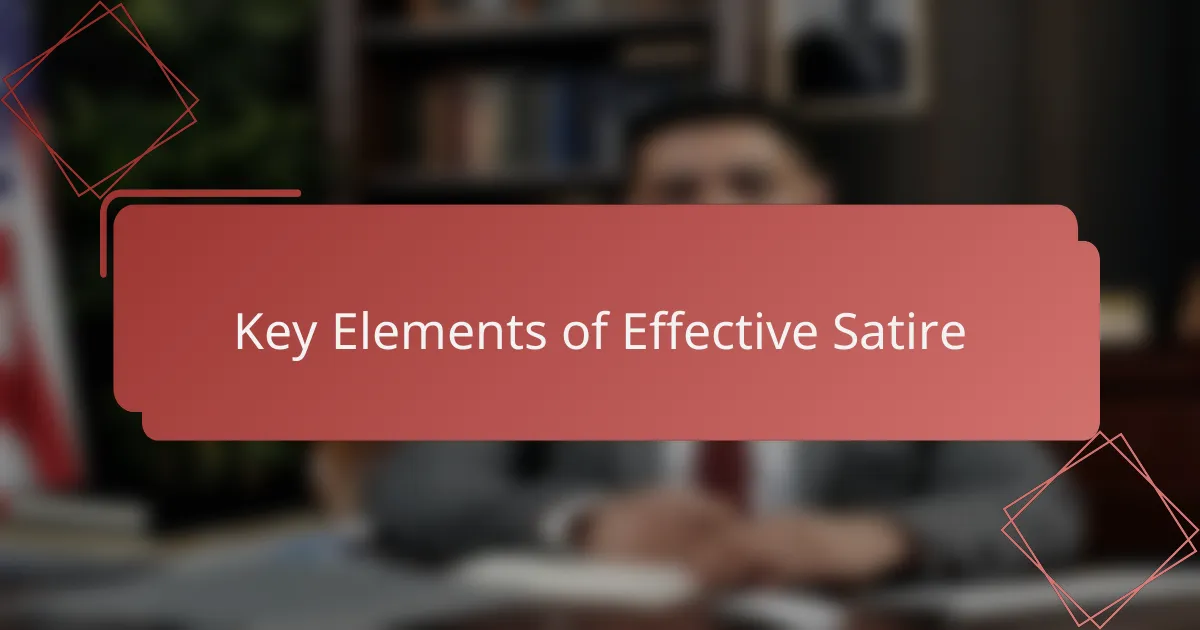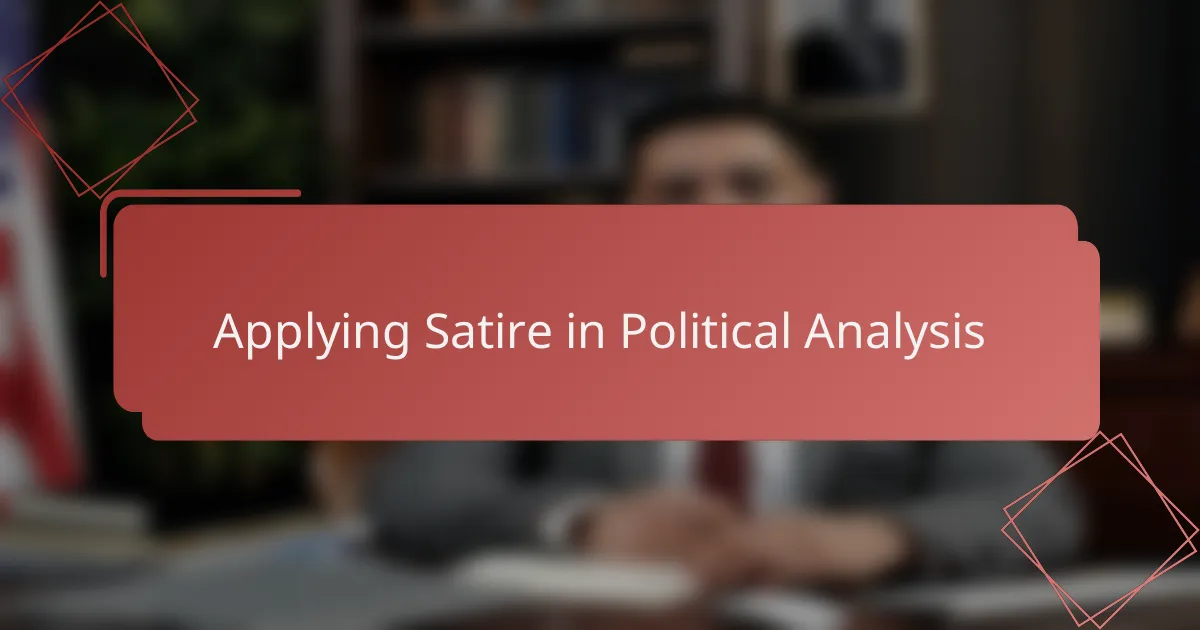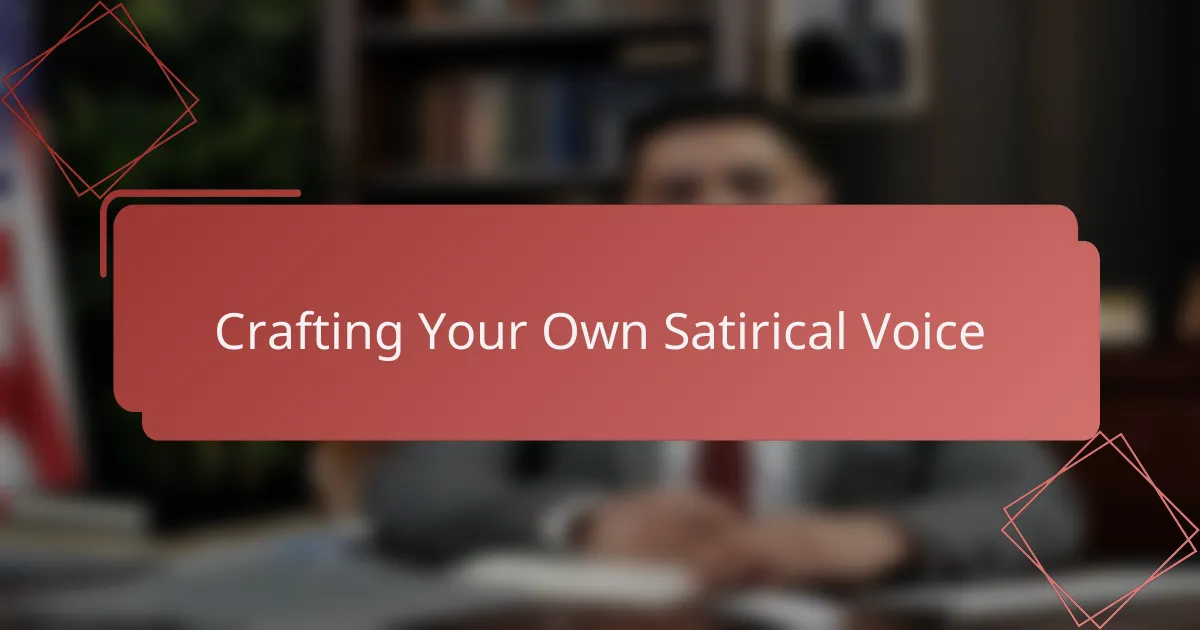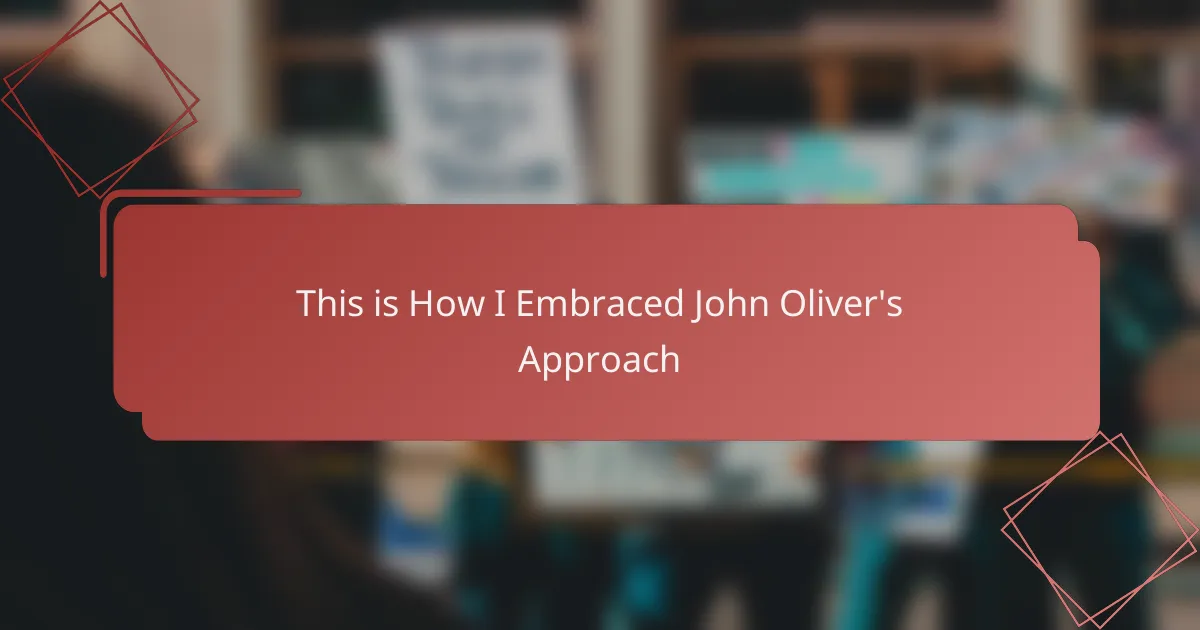Key takeaways
- Political satire effectively combines humor with insightful commentary, helping to make complex political issues relatable.
- John Oliver’s approach exemplifies thorough research paired with comedic timing, allowing for engaging discussions on serious topics.
- Successful satire invites critical reflection and emotional connection, maintaining a balanced tone that encourages audience engagement.
- Developing a unique satirical voice involves integrating research, empathy, and personal style to create impactful commentary.

Understanding Political Satire
Political satire has always struck me as a brilliant way to uncover uncomfortable truths without hitting overtly raw nerves. When I first encountered John Oliver’s style, I realized how satire could be both informative and hilarious, breaking down complex political issues into something relatable and thought-provoking. It’s this balance that makes political satire so powerful—it invites us to laugh while reconsidering our views.
One thing I’ve noticed is that good satire requires a deep understanding of political systems paired with sharp wit. Here’s what I’ve found essential in understanding political satire:
- It uses humor to highlight contradictions or absurdities in politics.
- Satire often exaggerates for effect but remains grounded in factual reality.
- It targets both political figures and societal structures, making you think critically.
- Timing matters; well-timed satire resonates more and can influence public discourse.
- It encourages active engagement rather than passive consumption of news.
Through my own journey, embracing this approach has made politics less intimidating and more engaging. Have you ever caught yourself laughing at a satirical piece and then reflecting deeply on the issue? That dual effect is what makes political satire, especially Oliver’s approach, so compelling to me.

Exploring John Oliver’s Style
John Oliver’s style is a masterclass in blending humor with in-depth political commentary. When I first watched his show, I was struck by how he manages to make complex issues accessible without losing the nuance. His use of satire feels both sharp and empathetic, which made me realize satire doesn’t have to be harsh to be effective.
What truly stands out in his approach is the balance between thorough research and comedic timing. This combination not only informs but also keeps the audience engaged, even when discussing heavy topics.
- Deep dives into controversial topics with meticulous fact-checking
- Use of irony and exaggeration to highlight absurdities in politics
- Incorporates visual aids and clips to reinforce points humorously
- Maintains a conversational and relatable tone throughout segments
- Connects emotionally with viewers by addressing real-world impacts behind jokes

Key Elements of Effective Satire
Satire works best when it strikes a balance between humor and truth, a lesson I really appreciated by observing John Oliver’s style. His approach taught me that effective satire doesn’t just make you laugh; it makes you think deeply about the issues at hand. I remember the first time I tried this method—it was challenging to be funny without losing the seriousness of the message, but that tension is where the impact happens.
What I noticed in Oliver’s work, which influenced my own, is the way he combines clarity with complexity, making even the most tangled political topics accessible and engaging. This balance keeps the audience invested and sparks critical reflection, something I strive for every time I write. Here are some crucial elements that define this style of effective satire:
- Sharp wit balanced with insightful commentary
- Clear, concise explanations of complex issues
- Use of irony and exaggeration to highlight absurdities
- Engaging storytelling that connects emotionally with the audience
- A confident yet respectful tone that invites reflection rather than alienation
- Timely and relevant references that resonate with current events
- The ability to reveal uncomfortable truths through humor without oversimplifying

Applying Satire in Political Analysis
Applying satire in political analysis has transformed my perspective on discussing serious issues. John Oliver’s clever mix of humor and facts taught me how to engage audiences without diluting the message. I realized satire can make complex topics accessible and spark genuine curiosity and reflection.
| Traditional Political Analysis | John Oliver’s Satirical Approach |
|---|---|
| Formal tone with straightforward facts | Humorous delivery combined with factual depth |
| Focus on policy details | Combines policy with punchlines to highlight absurdities |
| Often dry and dense, hard to engage wide audience | Entertaining and accessible, appealing to diverse viewers |

Embracing Humor for Engagement
Humor has a unique power to break down barriers and open minds, especially in the realm of political satire. I found that by weaving humor into complex political discussions, much like John Oliver does, I could capture attention and make the content more relatable. Early on, I noticed my audience responding with laughter and curiosity, which encouraged me to dig deeper into blending wit with facts.
From my experience, engaging people through humor isn’t just about making jokes; it’s about creating connections and encouraging critical thinking. Here are some key elements I embraced from John Oliver’s approach to humor for engagement:
- Use satire to simplify and highlight complicated political issues without diluting their importance
- Employ relatable analogies and everyday examples to make the content accessible
- Balance humor with solid research to build credibility and trust
- Address sensitive topics in a way that invites reflection rather than defensiveness
- Incorporate timing and pacing to maintain audience interest throughout the discussion

Crafting Your Own Satirical Voice
Finding my own satirical voice meant diving deep into what makes John Oliver’s style resonate so well with audiences. His ability to blend sharp wit with genuine empathy inspired me to approach political satire not just as comedy, but as a tool for meaningful critique. I realized that satire works best when it reflects your true perspective, so I started experimenting with tone and timing to match my own observations and humor.
Here are some techniques I found useful in developing my satirical voice, inspired by Oliver’s approach:
- Use detailed research to back your jokes; facts give satire a strong foundation.
- Balance humor with empathy to avoid alienating your audience.
- Embrace a conversational tone that feels natural and engaging.
- Be unafraid to take clear stances—satire is most effective when it has a point of view.
- Practice timing and pacing to enhance impact, just like Oliver’s well-timed punchlines.
- Let your personality shine through to make your satire unique and authentic.



